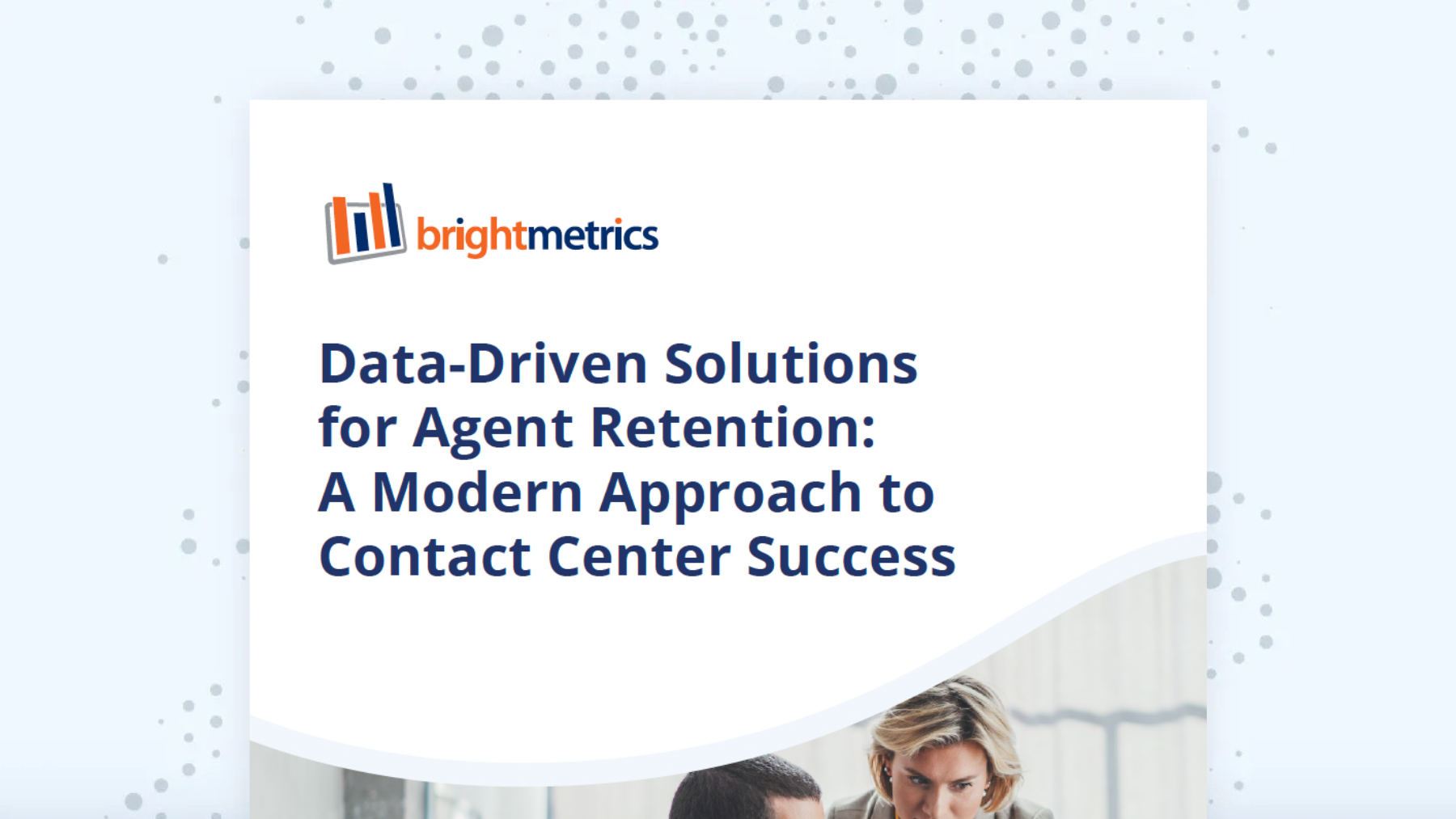I recently worked with a director of a contact center who was concerned with the productivity of one of her top agents. The director asked me to assess the operation, and efficiency was high on their agenda. “She’s experienced and capable,” the director explained. “She’s just not producing the work she used to. And she has a comparably lower first contact resolution rate.”
I spent some time looking at reports, talking with the team, and (most importantly) sitting with employees and observing the work firsthand. It didn’t take long to see what was happening. The agent in question was handling the most complex customer issues. She had a reputation as an experienced problem solver and her peers were happy to transfer difficult cases to her. Yep, those contacts took more time, and her first contact resolution (FCR) wasn’t as high. But she was the one who, once and for all, handled the toughest issues and created customers for life. She was a star.

What Is True Contact Center Agent Productivity?
I used to find that many contact center managers viewed contacts handled as virtually synonymous with productivity. How many calls, or emails, or social posts did you handle? Simple, right? Well, not so fast. True productivity is advancing the mission of the organization.
Transfers might impact the call mix, as with our star performer. But there are other variables at work. Agents can’t control contact arrival rate, contact types, customers’ communication abilities, or the accuracy of forecasts and schedules. If service levels are low and there’s always a queue, it will be one contact after another. But if service levels are good, there will be times agents are waiting for contacts to arrive. An immutable law in contact centers is that when service level goes up, agent occupancy goes down.
The Service Level and Occupancy Trade Off

The table above illustrates an example agent group. It is based on the widely used formula, Erlang C. Predictions include agents required, average speed of answer (ASA), service level (SL), and occupancy. Around 34 agents will meet the organization’s target service level of 80 percent of contacts answered within 20 seconds. Their occupancy—the time these agents are handling contacts versus waiting for them to arrive—will be 86%. That means they spend the balance of their time, 14%, waiting for work—the sum of seconds here and there between contacts, driven by random arrival.
With fewer agents, service level is worse, and occupancy is much higher: 30 agents are working like crazy, with occupancy at 97%. Those agents spend only 3% of their time waiting for customer interactions.

Because of this immutable law, performance standards based on the number of contacts handled or occupancy will be counterproductive; they will be based on variables outside of an individual’s control. Substituting average handling time as a productivity measure is problematic for many of the same reasons. And it’s becoming more so over time, with multiple contact channels and increasingly varied interactions.

So if you’re not measuring the quantity of work or how long it takes employees to handle it, what is the alternative? The answer is to focus on the two things that truly matter: being in the right place at the right time (Adherence to schedule), and doing the right things (quality). Together, they make a powerful pair.
Measuring Contact Center Agent Performance: Being in the Right Place at the Right Time
Schedule adherence is foremost a measure of how much time during an agent’s shift they are available to handle contacts. It includes talk time, after-call work (wrap-up), waiting for contacts, and related work. If adherence is 90%, agents are handling or waiting for contacts an average of 54 minutes per scheduled hour (.9 x 60 minutes).
Adherence applies to scheduled hours, the time agents are expected to be available. Activities such as breaks, lunch and training are not counted and not factored into the measure. Adherence can also incorporate timing—when was a person available to handle contacts? The idea is to ensure that agents are available when needed.
Adherence to schedule should be established at levels that are reasonable and that reflect the many things that legitimately keep agents from the work. It should also be flexible (e.g., adjustable downward) when the workload is light.

Enter quality. In successful contact centers, quality criteria are well-defined. They equate to the routine a pilot goes through to handle a flight, or the variables professional athletes play out instinctively. When well-defined, quality criteria determine the time to handle contacts. In fact, many contact centers have found that, as they better define quality criteria, handling time becomes more predictable. It often goes down, the result of not fumbling through decisions and processes that aren’t clear.
Establishing adherence to schedule and quality as primary areas of focus enables agents to concentrate on the two things they can control: being in the right place at the right time and doing the right thing. At an organization-wide level, imagine the insight that comes from focusing your metrics on supporting and furthering these two themes. For example, how do contact types (reasons) correlate to quality? What’s the relationship between quality and customer satisfaction? Does service level impact schedule adherence? I encourage you to brainstorm the possibilities with your team.
Focus on the right things, and you’ll see a cultural strength develop. And everyone wins—customers, employees and the organization.
From the Brightmetrics Team: Improving Performance With Analytics
Improve your contact center’s productivity and effectiveness with Brightmetrics™, powerful analytics and reporting services for UC and Contact Center systems. With Brightmetrics’ easy-to-use dashboards and reporting, measure critical metrics like ASA, service level, occupancy, adherence to schedule, and quality. Our customizable templates and scheduled reporting feature make it simple to share these valuable insights with your team members and key stakeholders alike.
Additionally, with the Brightmetrics Agent Balanced Scorecard™, managers and agents can measure and monitor productivity, quality, and adherence in an objective and consistent manner. Scorecards provide agents with clear expectations and goals, while enabling managers to identify areas for improvement and provide targeted coaching and training.
Take ownership of your performance and drive better business outcomes by exploring Brightmetrics today!




